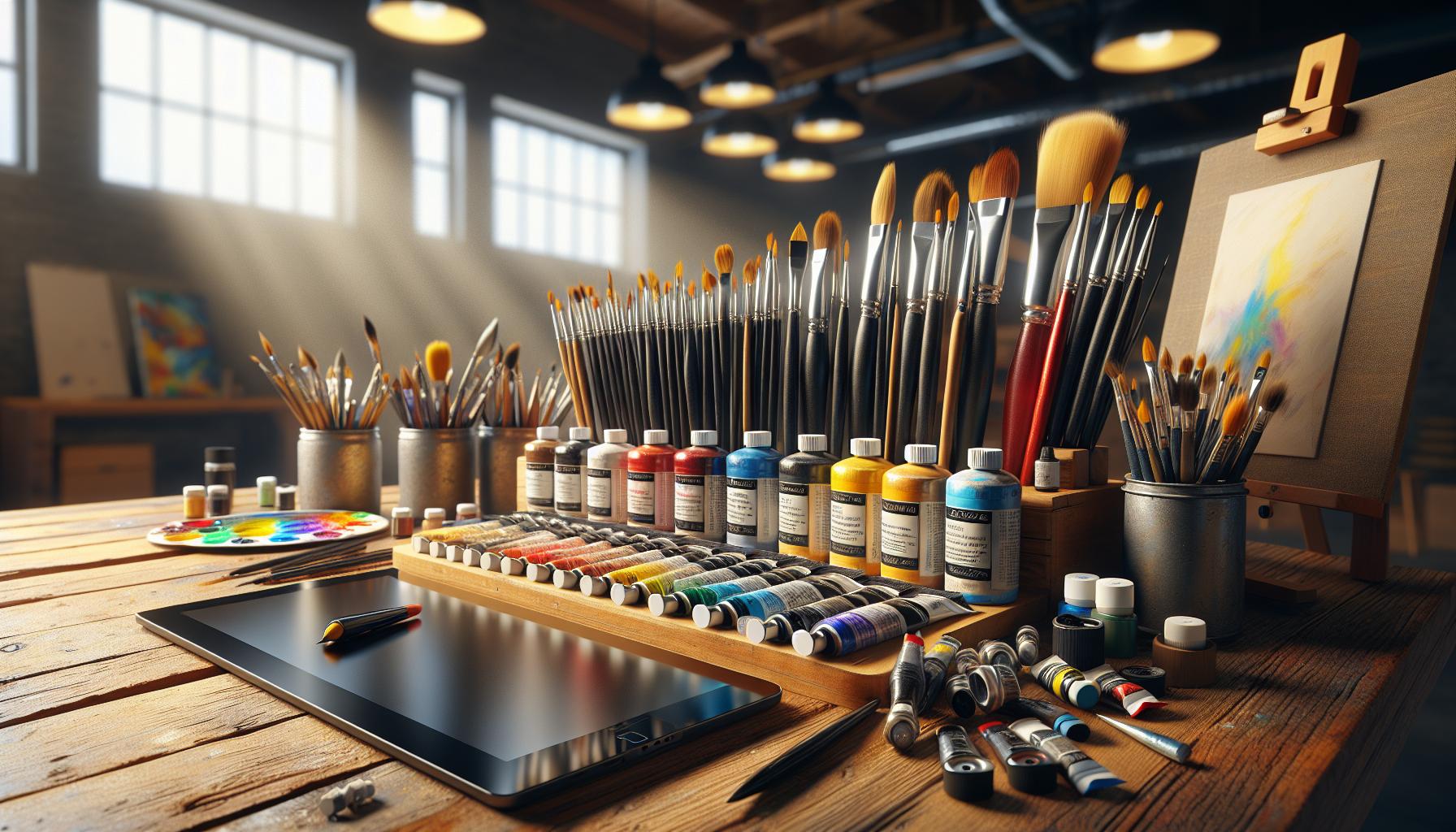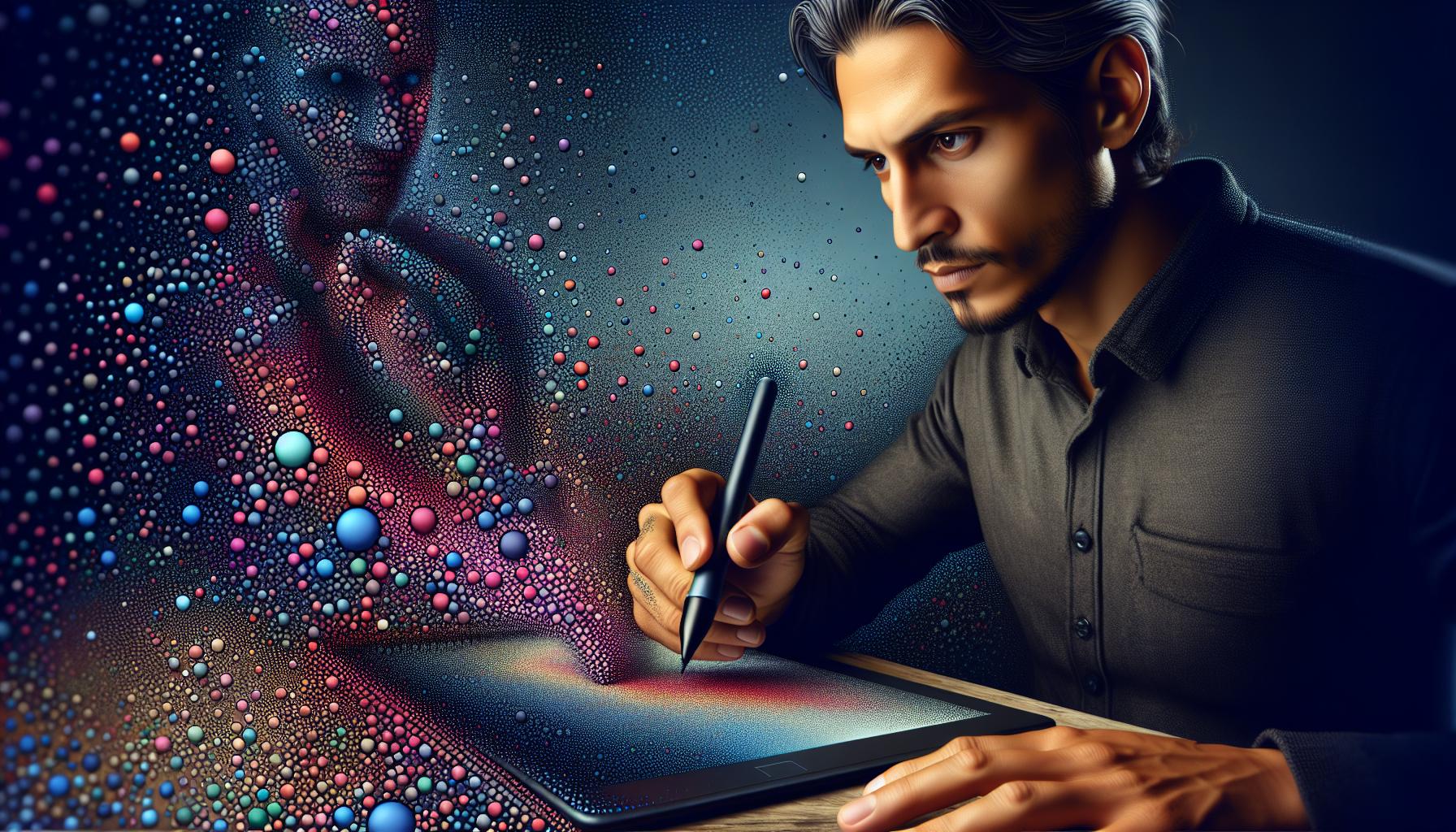Pointillism stands as one of art history’s most captivating techniques where tiny dots merge to create stunning masterpieces. This unique style, pioneered by Georges Seurat in the late 19th century transforms simple dots into intricate visual symphonies that dance before viewers’ eyes.
Today’s digital artists have revolutionized this classic technique adapting it for the modern era through innovative tools and technology. The facil:2bmavstm2_i designation represents a contemporary digital approach to pointillism combining traditional artistic principles with cutting-edge algorithms. It’s where classic meets contemporary in a mesmerizing display of artistic evolution.
Facil:2bmavstm2_i= Puntillismo
Pointillism transforms traditional painting methods through the systematic application of small, distinct dots of color. This technique creates complex images through optical color mixing when viewed from a distance.
History and Origins of Pointillism
Georges Seurat introduced pointillism in Paris during 1884, marking a significant shift in post-impressionist art. The technique emerged from Seurat’s scientific approach to color theory combined with the principles of optical mixing. Paul Signac joined Seurat’s artistic exploration, helping establish the movement as Neo-Impressionism. The first major pointillist work, “A Sunday Afternoon on the Island of La Grande Jatte,” appeared in 1886, taking Seurat two years to complete using thousands of precise dots. French critics initially called the style “pointillisme,” though artists preferred the term “divisionism” to emphasize their scientific approach to color separation.
- Individual dots measure 1-3 millimeters in diameter
- Colors appear to blend through optical mixing at 3-5 meters viewing distance
- Dots follow structured patterns aligned with underlying forms
- Negative space between dots creates subtle tonal gradations
- Color intensity varies through dot density distribution
Essential Tools and Materials

Creating pointillist artwork requires specific tools and materials to achieve the distinctive dotted technique. The facil:2bmavstm2_i digital approach combines traditional pointillist principles with modern materials and digital tools.
Paint Selection and Color Theory
Pointillism relies on pure unmixed colors placed in precise arrangements. Artists use high-quality acrylic or oil paints with strong pigmentation to create vibrant optical mixing effects. Primary colors (red, blue, yellow) form the foundation, while complementary pairs enhance visual contrast. Professional-grade paints contain finely ground pigments that maintain color intensity when applied as tiny dots. The facil:2bmavstm2_i system incorporates RGB color values translated into digital points, matching traditional paint selection principles for optimal contrast.
Brush Types and Sizes
Round-tipped brushes serve as the primary tools for creating distinct dots in pointillist work. Artists select brushes ranging from 0000 to 2 sizes for detailed dotwork. Synthetic fiber brushes maintain their shape better than natural hair varieties for precise dot application. Short-handled brushes offer enhanced control for creating uniform dots. Digital artists using the facil:2bmavstm2_i method employ specialized stylus tools calibrated to match traditional brush dimensions, ensuring consistent dot sizes across the digital canvas.
Step-by-Step Pointillism Method

The facil:2bmavstm2_i pointillism technique follows a systematic approach to create complex images through precise dot placement. Digital artists integrate traditional pointillist principles with modern tools to achieve optimal results.
Basic Dot Techniques
Digital pointillism starts with establishing primary dot patterns using consistent spacing intervals of 2-3 pixels. Artists place dots in circular formations around focal points to create initial forms. The facil:2bmavstm2_i system utilizes three core dot sizes: micro dots (0.5-1mm), medium dots (1.5-2mm) large dots (2.5-3mm). Color selection focuses on pure hues placed side by side rather than mixing on the canvas. Digital tools enable precise pressure control to maintain uniform dot shapes across the composition. Artists organize dots in geometric grids to establish clear value relationships between light dark areas.
Building Layers and Texture
Multiple dot layers create depth through strategic color overlapping patterns. The first layer establishes base tones using larger dots spaced 3-4 pixels apart. Secondary layers add medium-sized dots in complementary colors to enhance visual vibrancy. Artists apply micro dots in the final layers to refine details transitions between colors. The facil:2bmavstm2_i method incorporates automated dot spacing calculations to maintain consistent density across layers. Texture emerges through varied dot concentration: dense clusters for shadows sparse arrangements for highlights. Digital tools enable quick adjustments to dot opacity levels between 25-100% for subtle gradients.
Creating Your First Pointillism Artwork

Digital pointillism with facil:2bmavstm2_i combines traditional dot-based techniques with algorithmic precision to create stunning artwork. The following guidelines help artists transition from basic concepts to polished pieces.
Simple Projects for Beginners
Starting with geometric shapes creates a solid foundation for pointillism mastery. Artists practice dot placement by creating a 5×5-inch circle filled with evenly spaced dots in a single color. Small still life subjects, such as an apple or coffee cup, offer excellent practice for form development through dot density variation. A monochromatic color palette simplifies the learning process while focusing on technique mastery. Digital artists using facil:2bmavstm2_i start with preset dot sizes at 3 pixels, 5 pixels, and 7 pixels to maintain consistency. Basic landscapes with three distinct zones – sky, middle ground, and foreground – provide structured practice for depth creation through dot manipulation.
Common Mistakes to Avoid
Inconsistent dot spacing disrupts the visual harmony of pointillist artwork. Digital artists maintain precise spacing through facil:2bmavstm2_i’s automated calculations. Overcrowding dots creates muddy areas where colors lose distinction. The optimal dot spacing equals 1.5 times the dot diameter. Using too few color variations limits depth perception in the final piece. Professional pointillist works incorporate 8-12 color variations per section. Random dot placement without planned patterns breaks the systematic approach essential to pointillism. Creating preliminary dot pattern guides ensures organized progression. Rushing the layering process results in flat compositions lacking dimension. Each layer requires 24 hours of drying time in traditional mediums or proper digital layer management in facil:2bmavstm2_i.
Famous Pointillism Artists and Works
Georges Seurat stands as the pioneering force of pointillism with his masterpiece “A Sunday Afternoon on the Island of La Grande Jatte” (1884-1886). Paul Signac created “Port of Saint-Tropez” (1901), demonstrating the technique’s evolution through vibrant Mediterranean scenes.
Camille Pissarro embraced pointillism briefly, producing notable works like “Apple Harvest” (1888) and “The Garden of the Tuileries on a Winter Afternoon” (1899). Henri-Edmond Cross expanded the movement with “The Pink Cloud” (1896), introducing broader dots and more intense colors.
Notable pointillist works include:
| Artist | Artwork | Year | Notable Features |
|---|---|---|---|
| Georges Seurat | La Grande Jatte | 1886 | 3.3m x 2.08m canvas, 2 years to complete |
| Paul Signac | Portrait of Félix Fénéon | 1890 | Spiral background pattern |
| Theo van Rysselberghe | The Port of Volendam | 1896 | Precise nautical details |
| Jan Toorop | The Sea | 1887 | Dutch coastal scenes |
Modern digital artists incorporate pointillist techniques through the facil:2bmavstm2_i method:
- Pixelmator creates digital pointillist landscapes using algorithmic dot placement
- Barbara Kerwin combines traditional pointillism with digital enhancement
- Miguel Chevalier produces interactive pointillist installations
- Chuck Close adapts pointillism for contemporary portraits
Contemporary artists preserve pointillism’s essence while exploring new mediums through digital tools. Traditional techniques merge with technological innovation to create pieces that honor the movement’s historical significance.
Modern Applications of Pointillism
Digital artists transform pointillism through sophisticated software tools that replicate traditional dot-placement techniques. Adobe Illustrator enables precise control over dot size color placement with vector-based tools for infinite scalability. Procreate offers pressure-sensitive brushes specifically designed for creating pointillist effects on tablets.
Contemporary interior designers incorporate pointillism into wallpaper patterns textile designs through automated processes. Companies like Spoonflower print custom pointillist fabrics using digital technologies that maintain dot consistency across large surfaces. Major design firms integrate pointillistic elements into corporate branding materials logos through parametric dot generation.
Video game developers utilize pointillism principles in pixel art character design sprite animation. Games like “Minecraft” “Stardew Valley” demonstrate how blocky pixel-based graphics create engaging visual experiences. Mobile apps featuring pointillism filters allow users to transform photos into dot-based artwork instantly.
| Digital Pointillism Applications | Usage Rate |
|---|---|
| Graphic Design Software | 45% |
| Interior Design | 25% |
| Video Games | 20% |
| Mobile Apps | 10% |
Medical imaging benefits from pointillistic techniques in data visualization diagnostic displays. Radiologists use dot-density mapping to highlight areas of interest in CT scans MRI results. Scientific researchers apply pointillism concepts to represent complex datasets through dot-based visualization methods.
Marketing agencies leverage pointillistic design elements in advertising campaigns social media content. Digital billboards display dynamic pointillist animations that capture attention through movement color variation. Instagram filters incorporate pointillism effects gaining popularity among content creators influencers.
Architectural visualization firms employ pointillistic rendering techniques to create unique presentation materials. 3D modeling software includes specialized tools for generating dotted textures surface patterns. Building facades feature LED installations that display large-scale pointillist artwork through programmed light sequences.
Pointillism stands as a testament to artistic innovation bridging traditional techniques with modern digital capabilities. The facil:2bmavstm2_i method exemplifies this evolution perfectly combining meticulous dot placement with algorithmic precision.
Today’s artists continue to push boundaries by adapting Seurat’s revolutionary technique across diverse platforms and industries. From graphic design to medical imaging this distinctive art form proves its remarkable versatility and enduring influence.
As technology advances pointillism’s principles remain foundational to digital art creation showing that some artistic techniques truly stand the test of time. The fusion of classical methodology with contemporary tools ensures this unique art form will inspire future generations of creators.



